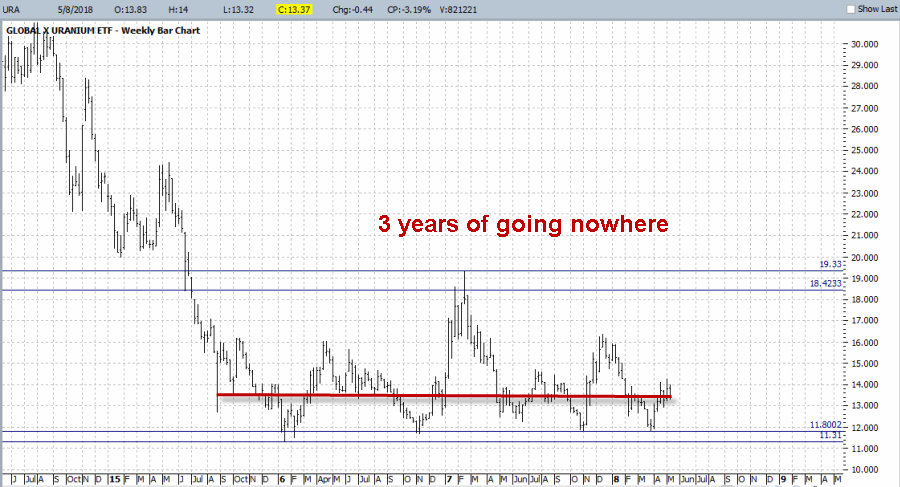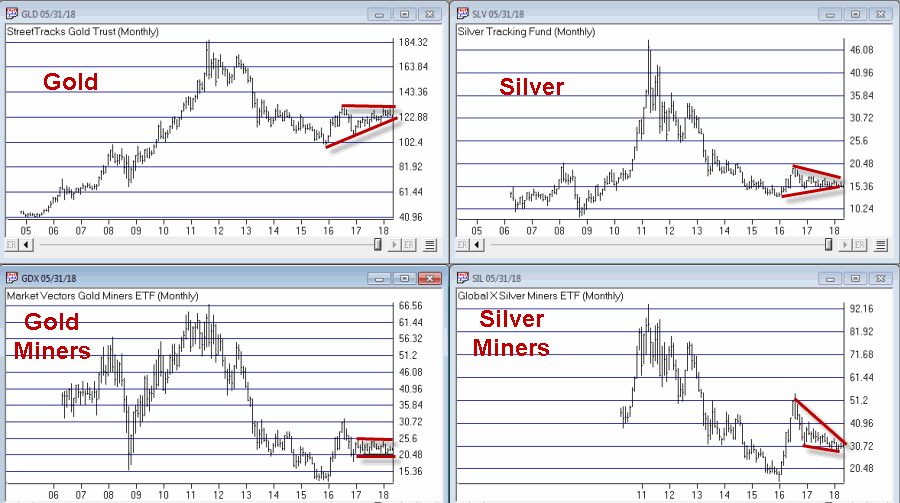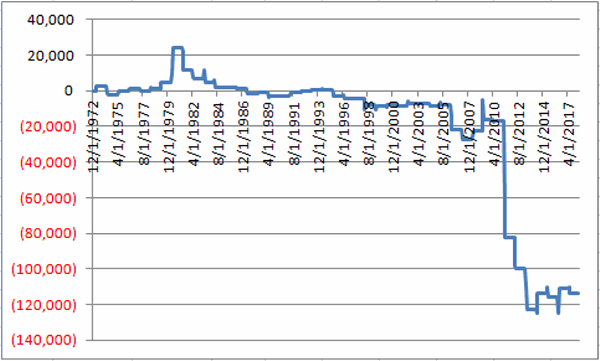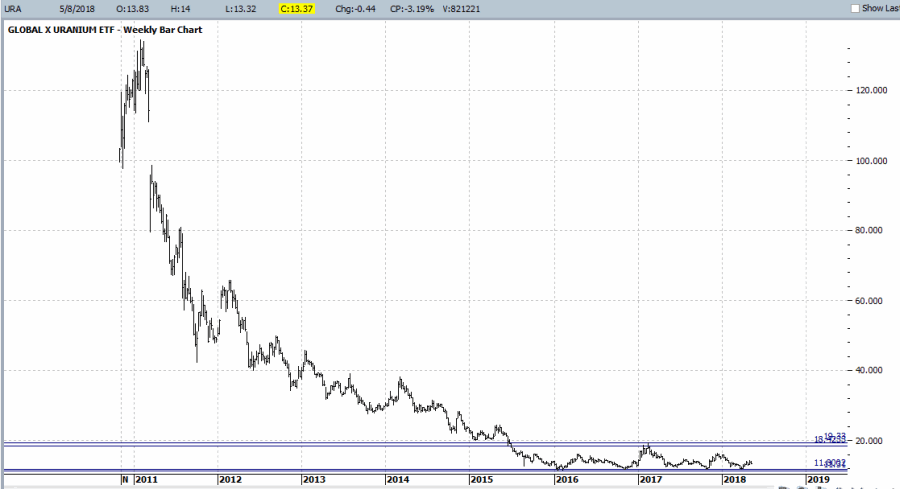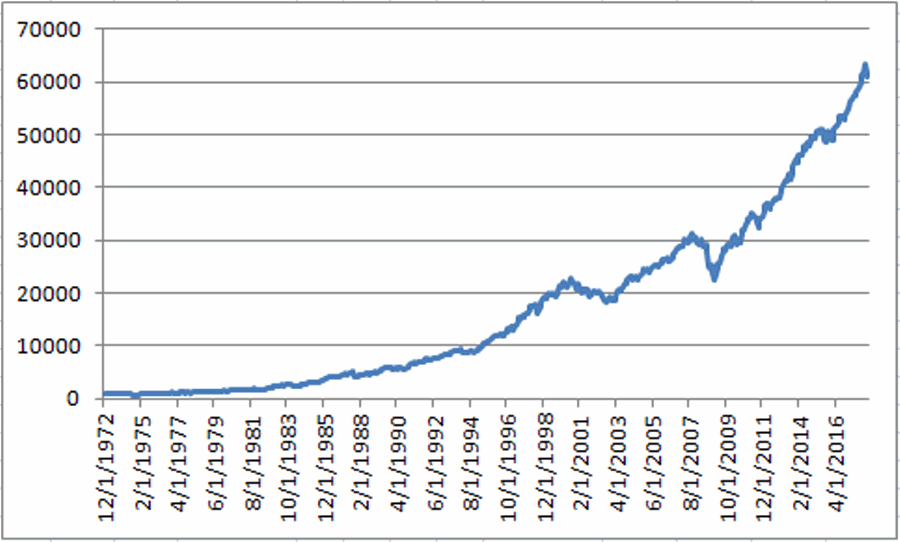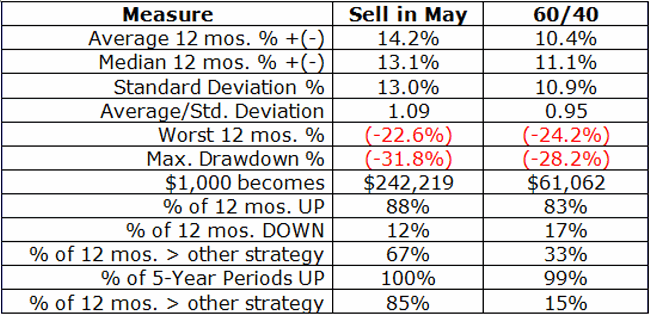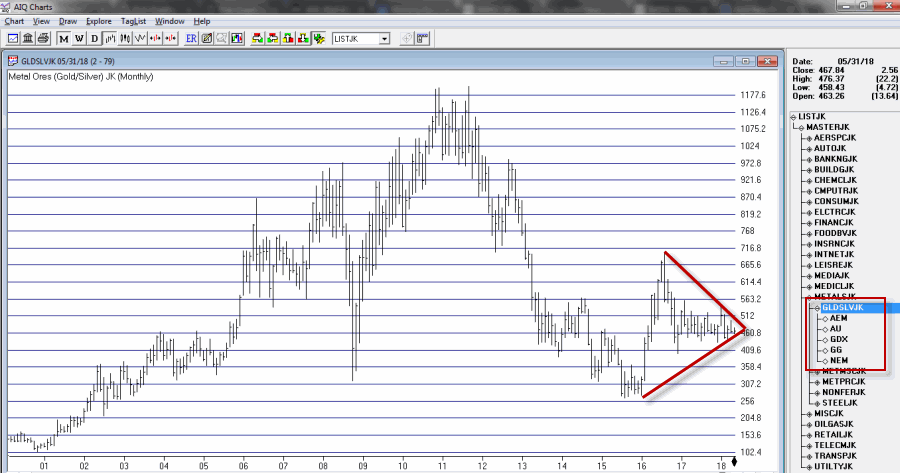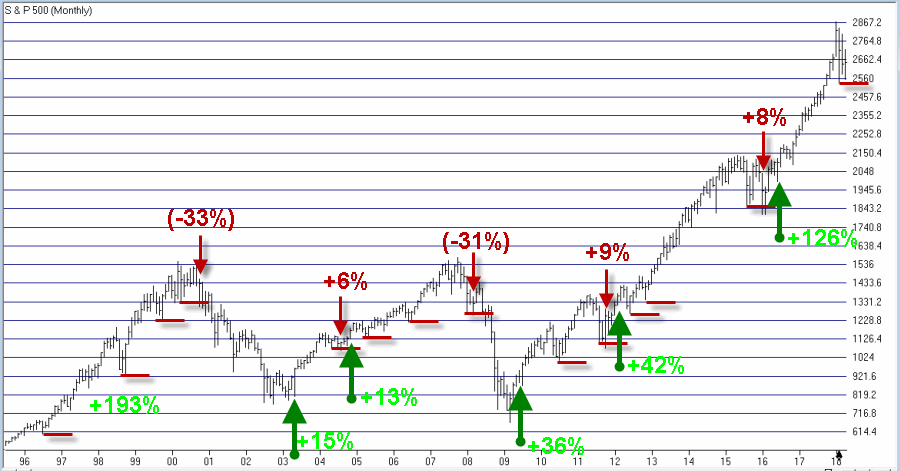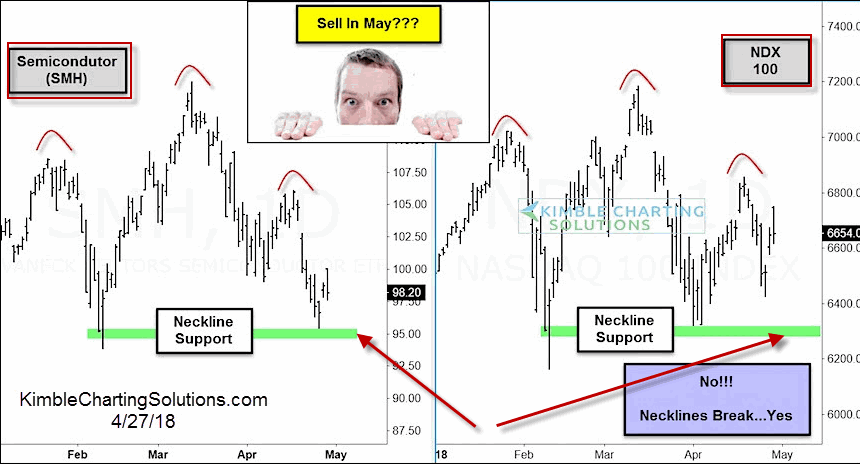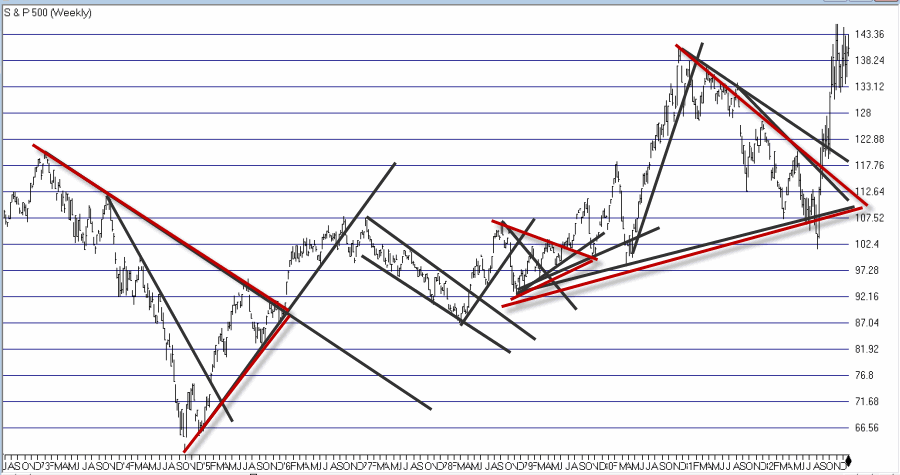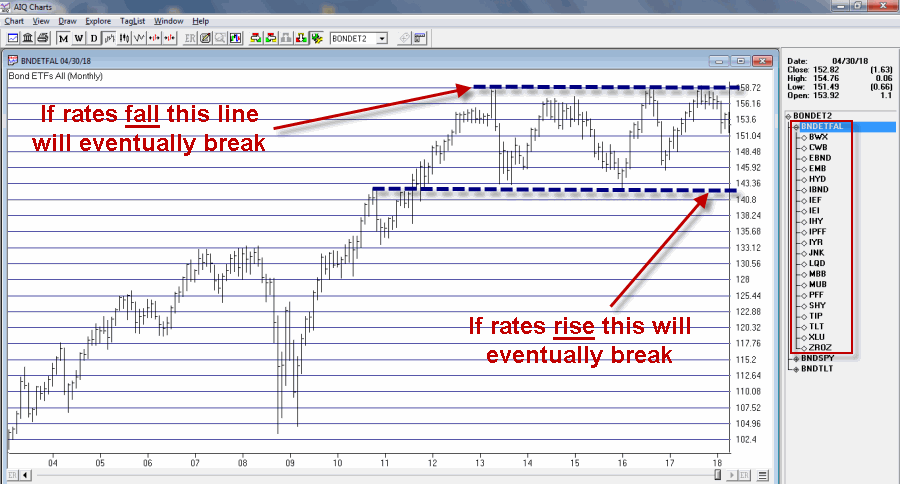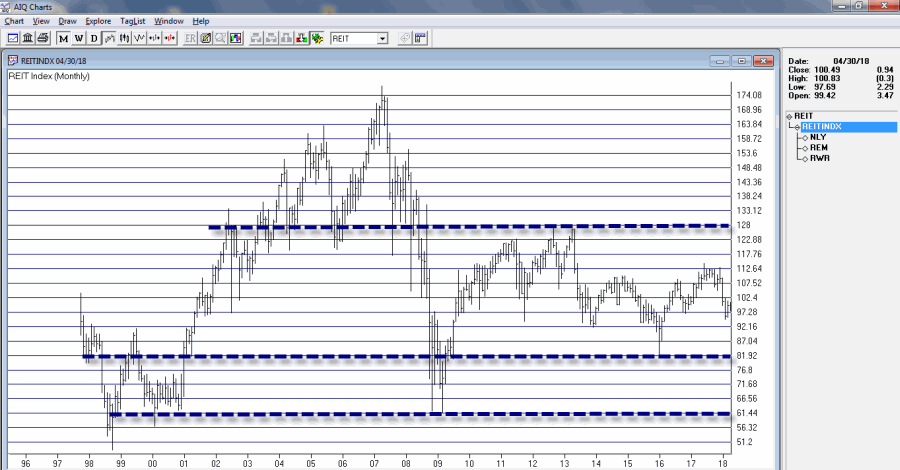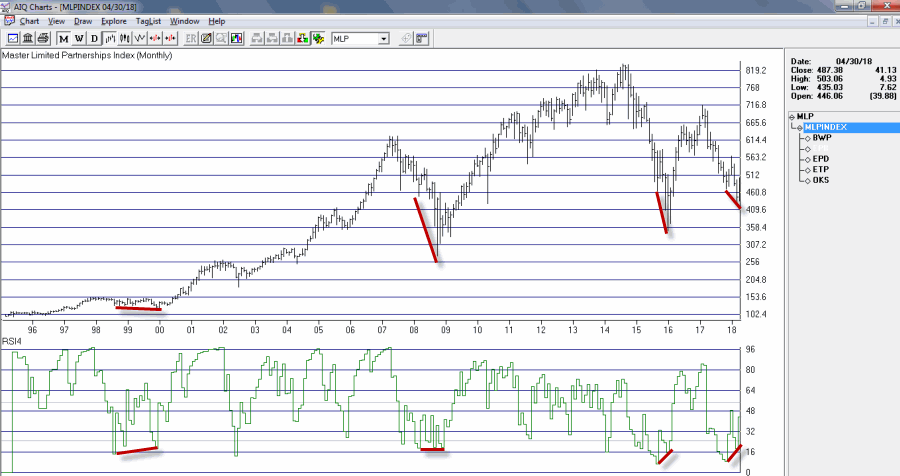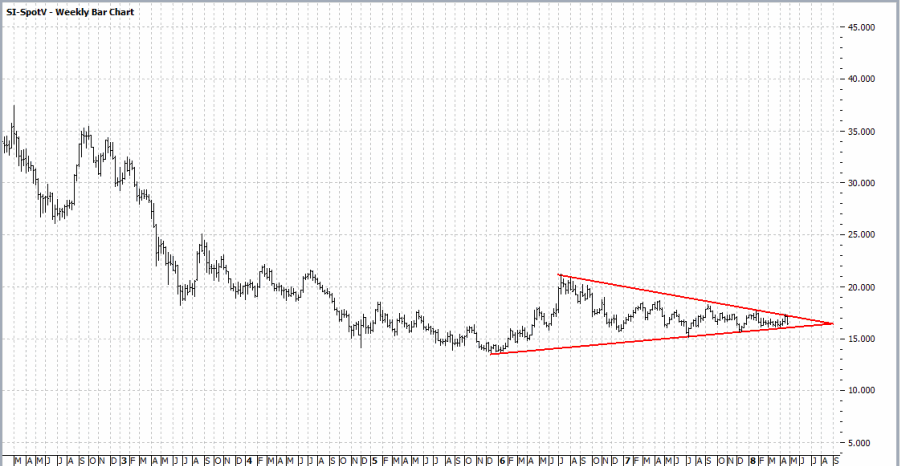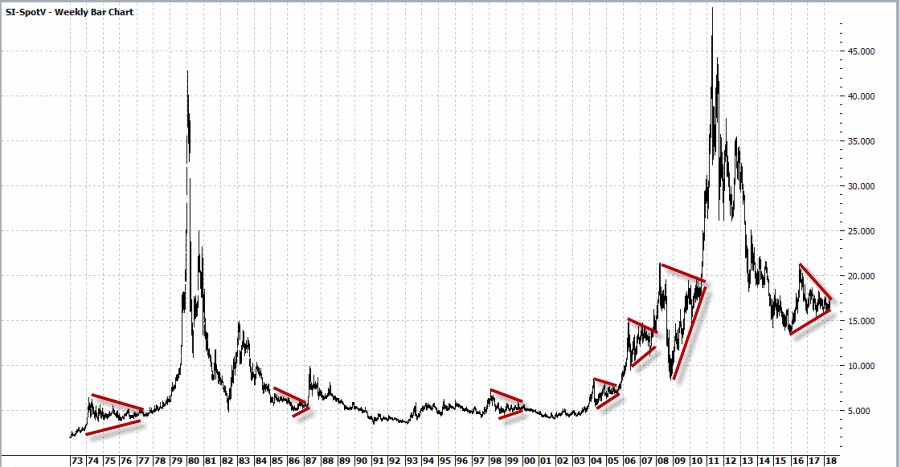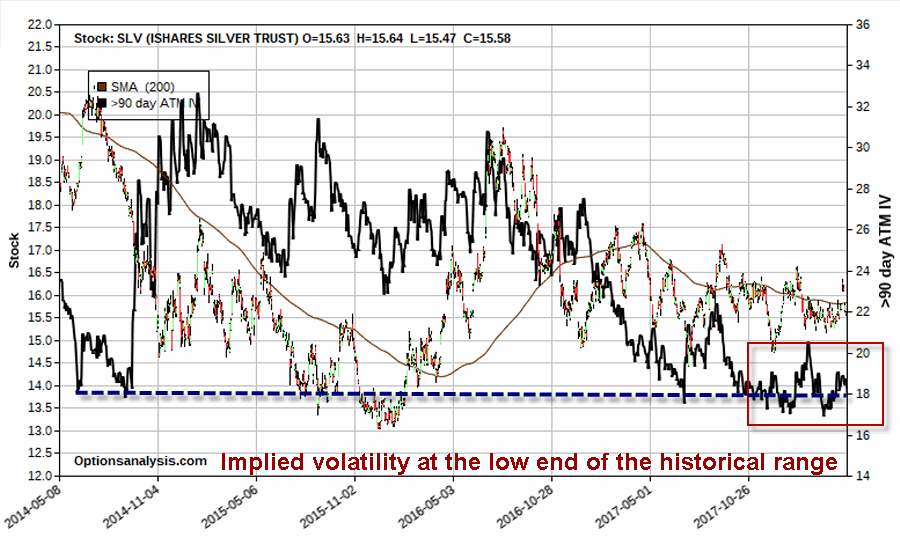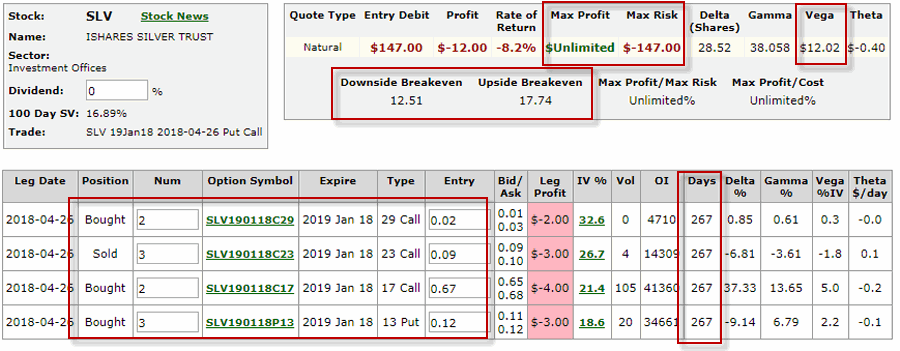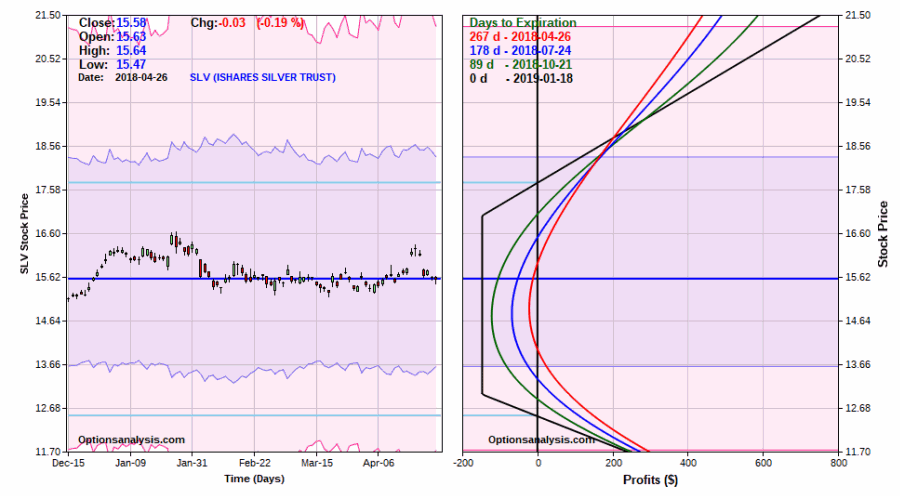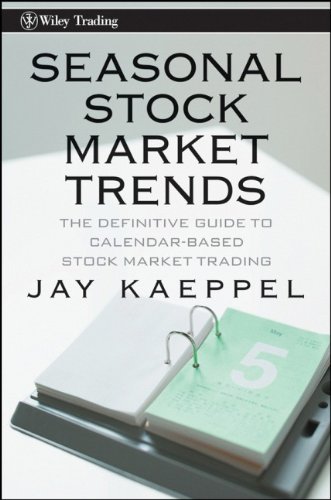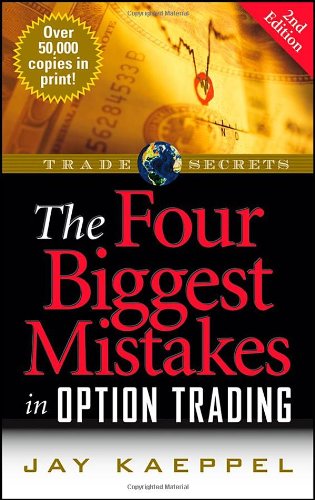If there is one thing that I am not very good at, it is “picking tops and bottoms with uncanny accuracy.” While I feel bad about this at times I do take some comfort in the knowledge that no one else is either (regardless of what you might be told). Still, there can be times when it can make sense to try. Like now for instance.
Figure 1 displays ticker IWM – an ETF that tracks the Russell 2000 small-cap index.
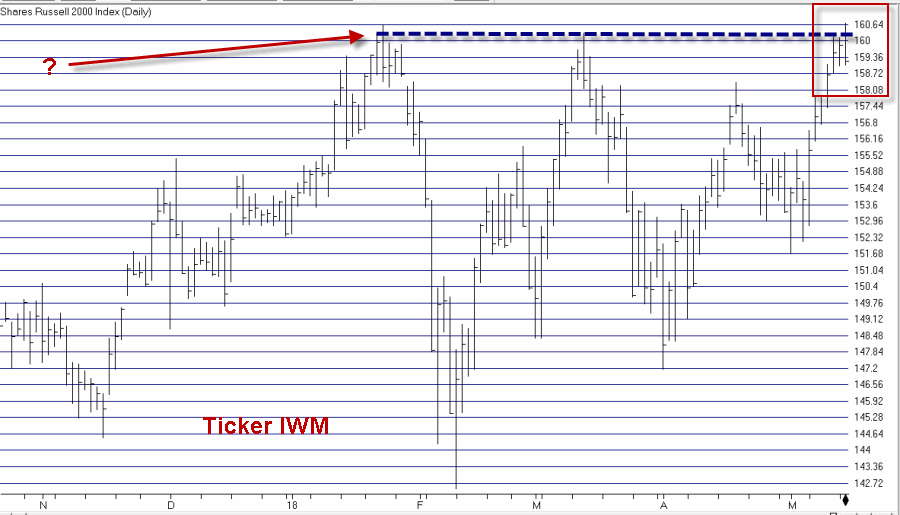 Figure 1 – Ticker IWM (Courtesy AIQ TradingExpert)
Figure 1 – Ticker IWM (Courtesy AIQ TradingExpert)
Because I am not good at ”predicting” things I cannot tell you if this will turn out to be an actual triple top or not (for the record, most of the stuff I follow is still bullish on the stock market overall). But I do know one thing – this is what a triple top looks like.
I also know:
*The “Best Six Months” period of the year is over and this part of a mid-term year has been “dicey” in the past
*The best part of the election cycle starts on 10/1/18
So what if an investor was concerned that the market is topping out right here and fears that something “nasty” might happen between now and the end of September? What can be done?
IMPORTANT: What follows is NOT a “recommendation”. It is simply one example of one way to play given the criteria discussed above.
One simple approach might be to buy the IWM September 28 159 put. The particulars appear in Figure 2 and the risk curves appear in Figure 3. Figure 2 – IWM Sep 159 put (Courtesy www.OptionsAnalysis.com)
Figure 2 – IWM Sep 159 put (Courtesy www.OptionsAnalysis.com)
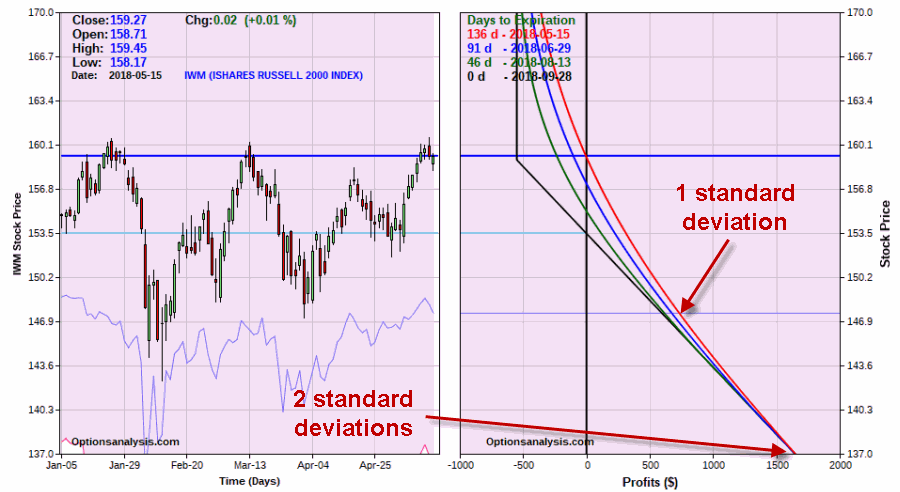 Figure 3 – IWM Sep 159 put risk curves (Courtesy www.OptionsAnalysis.com)
Figure 3 – IWM Sep 159 put risk curves (Courtesy www.OptionsAnalysis.com)
*The option costs $550 to buy, which represents the maximum risk if IWM rallies instead of declines.
*The breakeven price is $153.50 per IWM shares
*If IWM declines 1 standard deviation to roughly $147.82 a share the option will generate a profit of $590 to $710 depending on how soon that price is hit.
*If IWM declines 2 standard deviations to roughly $137.00 a share then the option will generate a profit of roughly $1,640.
Summary
Is IWM forming a triple top? Will betting on the downside payoff? Sorry folks, I have to go with my standard answer here of “It beats me.” Besides, the odds of me picking the top or bottom in anything to the day are pretty long, so please do not consider this a prediction.
Still the point is that if one is concerned about such a possibility and wanted to hedge against it, options offer a pretty simple way to do it.
Jay Kaeppel
Disclaimer: The data presented herein were obtained from various third-party sources. While I believe the data to be reliable, no representation is made as to, and no responsibility, warranty or liability is accepted for the accuracy or completeness of such information. The information, opinions and ideas expressed herein are for informational and educational purposes only and do not constitute and should not be construed as investment advice, an advertisement or offering of investment advisory services, or an offer to sell or a solicitation to buy any security.
